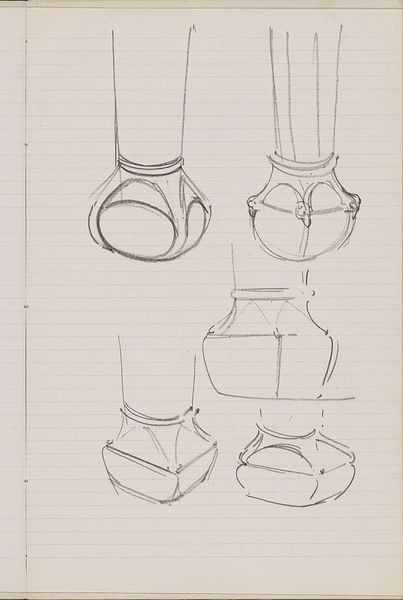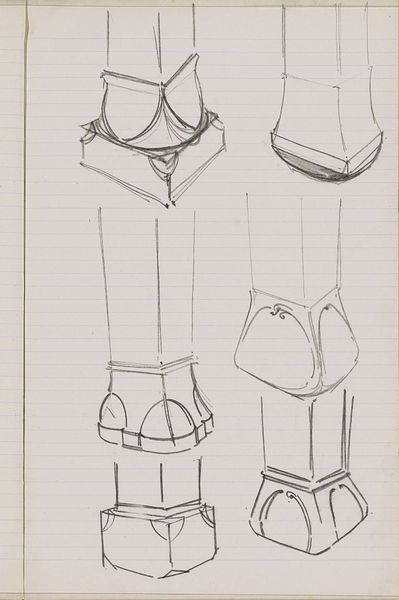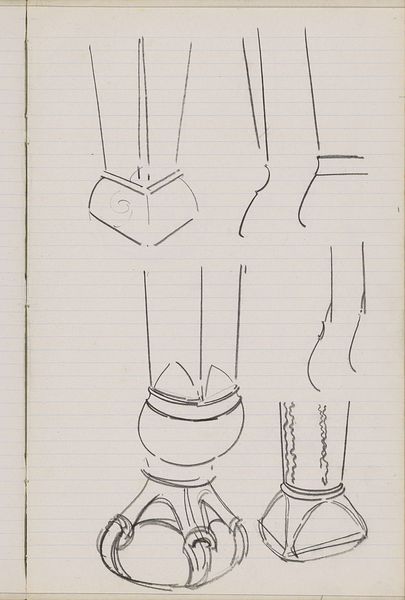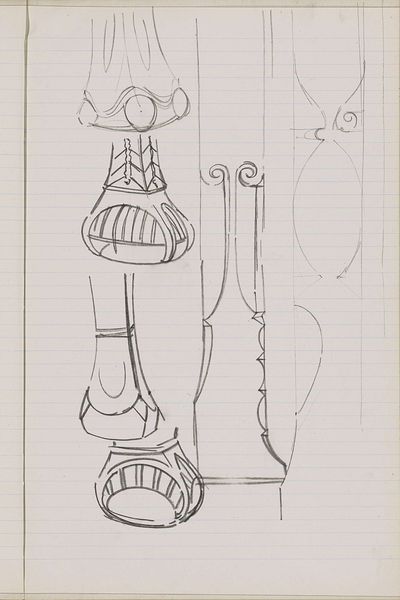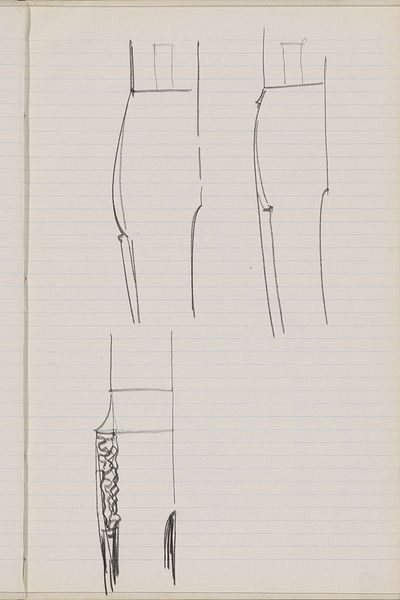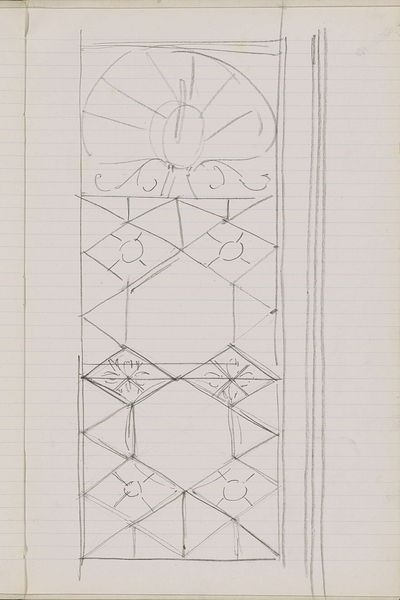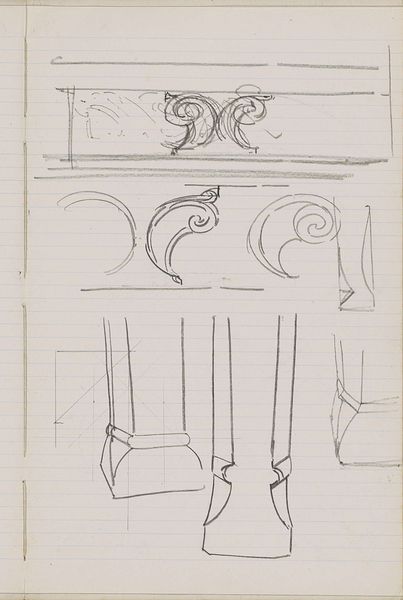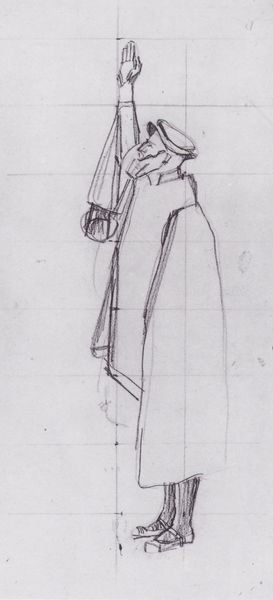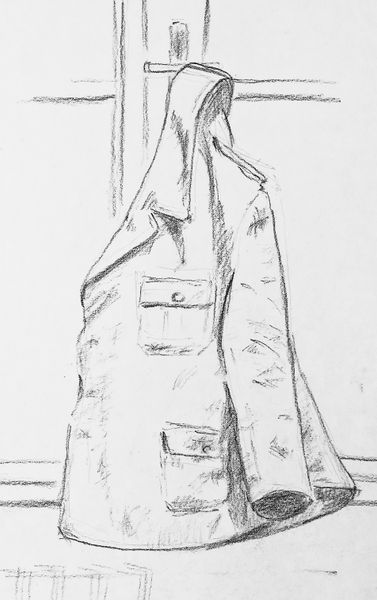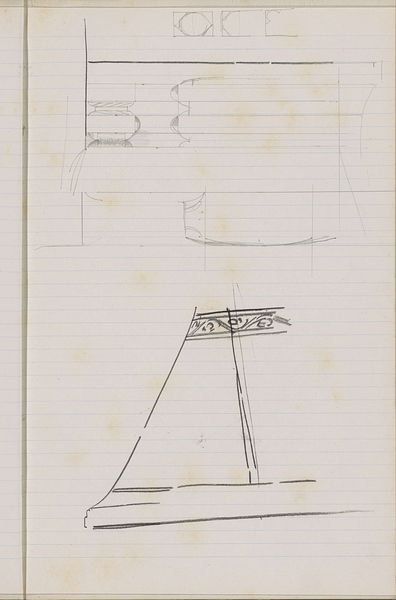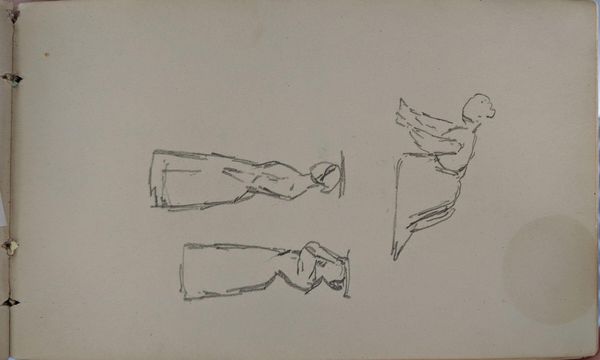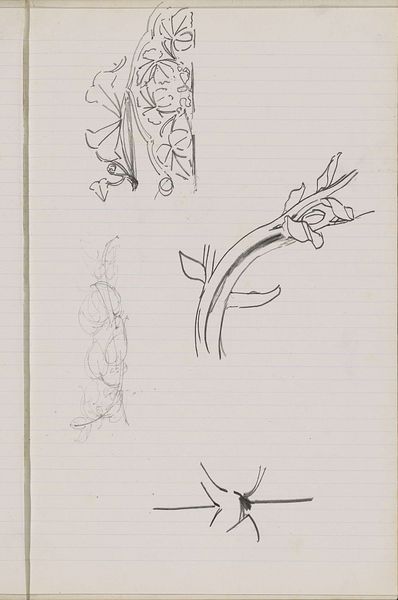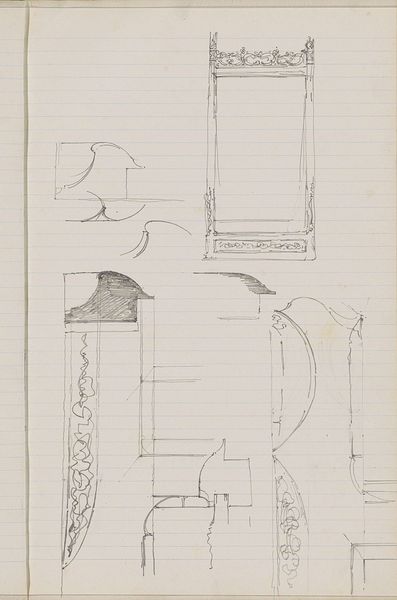
drawing, paper, ink, pen
#
drawing
#
table
#
art-nouveau
#
quirky sketch
#
paper
#
form
#
personal sketchbook
#
ink
#
idea generation sketch
#
sketchwork
#
ink drawing experimentation
#
geometric
#
sketch
#
pen-ink sketch
#
line
#
sketchbook drawing
#
pen
#
storyboard and sketchbook work
#
sketchbook art
#
initial sketch
Copyright: Rijks Museum: Open Domain
Curator: What we’re looking at here is a drawing titled "Tafelpoten," or "Table Legs," by Gerrit Willem Dijsselhof, dating back to around 1901. It’s a pen and ink sketch on paper, currently held at the Rijksmuseum. Editor: There's a playful quality to it, a lightness. It's just a sketch, but the lines feel so purposeful. It's got an architectural air, but also reminds me of whimsical costume design. Curator: It does evoke the feeling of play. As a design study, you can see Dijsselhof experimenting with form. Each leg is a variation on a theme. Given the period, one immediately thinks of Art Nouveau and its embrace of decorative fluidity. Editor: Absolutely, the Art Nouveau influence is clear. Though simplified, you still see the stylized curves attempting to reflect natural forms. What strikes me is the practicality, the intent for this to actually be built and seen as a mass produced design is obvious from the composition. Curator: I agree. And while these are “just” sketches, they carry so much of Dijsselhof’s design sensibility, his aesthetic DNA. He clearly delights in transforming what is essentially a functional object into something visually compelling. The table leg becomes almost like a tiny totem pole, each telling its own symbolic story through line and shape. It would have made quite a political statement, I can imagine the interior space for which that was envisioned. Editor: It makes you consider what furniture symbolized in the rising of industrial capitalism: status, wealth, and more broadly social connection and cohesion, which in this drawing gets a jolt of nature-based ornament. Curator: Indeed. And within that social context, Dijsselhof offers these handcrafted designs, hinting at a revival of artisanship, of uniqueness, against mass production. There's a deeply personal, even spiritual, element woven into something so ostensibly mundane. Editor: Looking at this again, I think what resonates with me is the promise it holds. The possibility, even in a functional item, for art to elevate the everyday. Curator: It really underscores how artistic intention can imbue even the simplest objects with meaning, turning furniture into cultural artifacts. It's been revealing to think about it together.
Comments
No comments
Be the first to comment and join the conversation on the ultimate creative platform.
